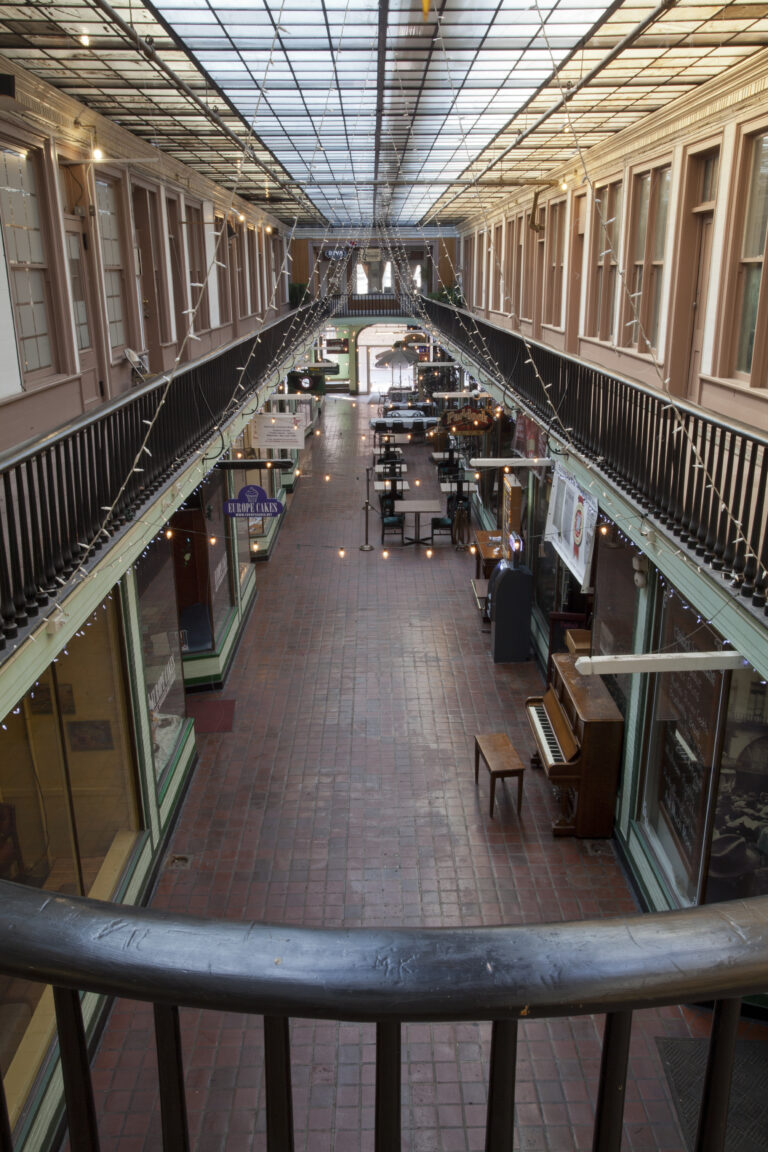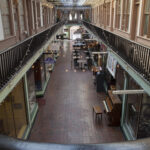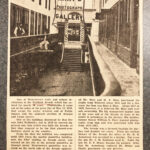Paddock Arcade

LOCATION:
1 Public Square
DATE:
1850
ARCHITECT:
Built by Loveland Paddock and designed by architect Otis Wheelock
NARRATIVE:
The Paddock Arcade was built by Loveland Paddock and designed by the architect Otis L. Wheelock, Watertown’s only architect at the time. Mr. Wheelock designed and built two-thirds of the new buildings on Public Square after the Great Fire. His designs were popular with city residents, and influenced the work of later architects in Watertown well into the 1940s. Today, the Paddock Arcade building is the only remaining Wheelock designed building around the Public Square.
The Paddock Arcade is similar to the arcades in Paris which introduced indoor covered malls that incouraged shopping and socializing free of muddy streets no matter the weather. The structures were the result of newly introduced cast iron as a building material that supported the glazing. Watertown’s Arcade was the 2nd in the United States and now the longest continuously operating arcade in the country.
Hart Daguerian Photography Studio was one of the first tenants, producing studio photographs for clients just a decade after the new medium was introduced to the world.
Although the building has been renovated several times it remains a covered shopping mall with natural light and a pillar of Watertown’s historic district.
The Paddock Arcade is listed on the National Register of Historic Places.
One of the original tenants was Hart Photography Studio that offered Daguerreotypes, photographs that were difficult to make but stunningly beautiful. Some historians claim that for detail and quality they have never been surpassed – that the process has gone downhill ever since.
Walter Benjamin, the essayist and cultural historian, was working on a book about the arcades in Paris when he died. “Passagenwerk or Arcades Project was an unfinished project of German philosopher and cultural critic Walter Benjamin, written between 1927 and 1940. An enormous collection of writings on the city life of Paris in the 19th century, it was especially concerned with Paris’ iron-and-glass covered “arcades” (known in French as the passages couverts de Paris).
Benjamin’s Project, which many scholars believe might have become one of the great texts of 20th-century cultural criticism, was never completed due to his suicide on the French-Spanish border in 1940. The Arcades Project has been posthumously edited and published in many languages as a collection of unfinished reflections. The work is mainly written in German, yet also contains French-language passages, mainly quotes.”
From Wikipedia: https://en.wikipedia.org/wiki/Arcades_Project






